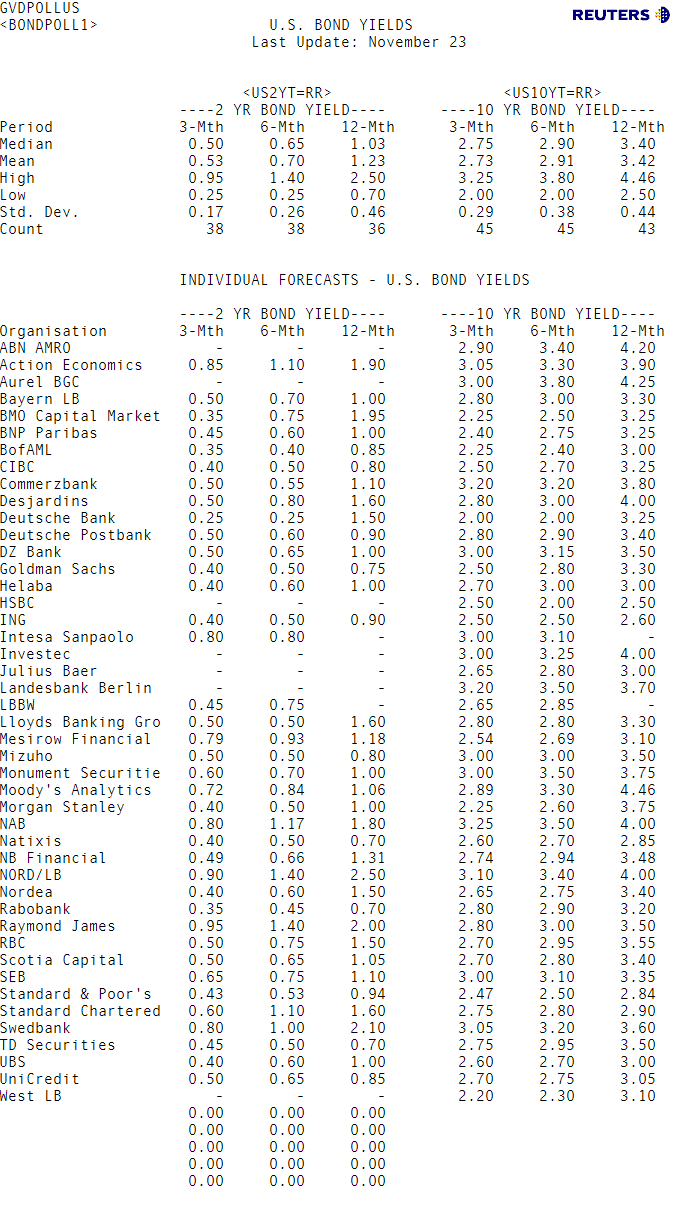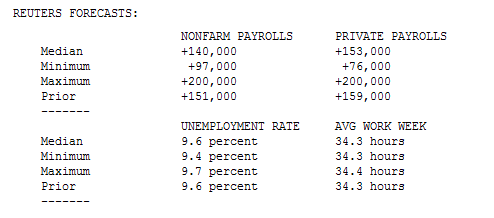The November Employment Situation Report will be released at 830am tomorrow morning.
The last time the Employment Situation Report was recapped on this blog, we were fresh off a one-day QEII rally that had led mortgage rates back down to record lows. (In reality the best loan pricing of our lifetime was consistently offered from October all the way through November 4th, +/- a few bps). Since then the bond market has traveled from one extreme to another. And the trip has not been pleasant. We experienced violent spikes, rapid recoveries, head fakes, nose dives, false rallies, profit taking, positional cleansing, and more recently desperation selling/locking.
This was not a pleasant process for you, nor was it a pleasant one for me. In the end, after re-reading everything I wrote leading up to the November 3rd FOMC meeting, I am happy with my analysis. I covered all the angles. I made it very clear to the community that floating past October 15th meant passing on rates below 4.25% for a chance at broad based offers below 4.00% (down to 3.75% if you were lucky). We discussed threats to record low mortgage rates, namely the Fed losing their credibility, which they did in the eyes of many the minute the FOMC statement was released and QEII flashed on my screen in RED BOLD LETTERS. We called out the pain trade two weeks before it really played out. We commented on QEII already being baked in. We even nailed the logic behind QEII and explained why it was a textbook response to high unemployment in a disinflationary environment. The tactical bias was there. The strategic bias was there. All the signs pointed toward rates at or below 4.00%. Looking back, I don't think I would've played it any different. I saw the market for what it was at the time and made a decision. I wish it had played out like we'd hoped. But it didn't.
I guess that's why they call it the "pain trade".
There is good news though. If you've been with us over the past few months or even years, then both your wallet and your brain are better off because of it. This blog was never about making more money. It was and always will be about building your knowledge base, at least while I'm around.
Moving on....
Tomorrow the "QEII Cleansing Process" will come to a close, good or bad, upon the release of the November Employment Situation Report. We can't tell you what will print at 830am and we can't tell you how the market will react, but we can tell you we expect to gain a better understanding of the market's motivations after this event.
THIS IS WHAT MOTIVATED THE BOND MARKET TO SELL OFF ON NOVEMBER 5TH....
From Data Flash: +151,000 Jobs. Hourly Earnings Up. Work Week Longer...
Nonfarm payrolls grew by 151,000, this was much better than calls for a
+60,000 print. The private sector added 159,000 jobs vs. estimates for a
read of +75,000. The Unemployment Rate was unchanged at 9.6%. Average
Hourly Earnings were up 0.2% and the Average Work Week rose to 34.3
hours from 34.2.
Plain and Simple: IMPROVED AND BETTER THAN EXPECTED IN EVERY KEY METRIC BESIDES THE HOUSEHOLD SURVEY (U/E RATE)
Bottom Line: The October Employment Situation Report was strong, specifically in the private sector. Tomorrow the market will look for confirmation that this strength is capable of continuing. What's at risk? 3.5s already lost their title as "PRODUCTION COUPON" and now the 4.0 is on the verge of handing over the trophy to the 4.50. If this happens, 4.75% would become the best par 30 year fixed note rate and 5.00% would be "best execution". So needless to say, the stakes are high.
MG wanted to add the table below and offer a few words of wisdom before tomorrow morning.....
First, below are 2-year TSY note and 10-year TSY note outlooks from major economists, dealers, banks, and brokers. Most folks tend to agree with our outlook that rates will either hold here or be lower in the next 3-6 months.

Here's how economists surveyed by Reuters expect NFP to print...

In addition, Reuters noted upon the release of these survey results the following factors to watch:
- "Improving labor market conditions could see the return of some discouraged jobseekers and keep the unemployment rate at a lofty 9.6 percent for a fourth straight month."
- "Private payrolls have grown above 100,000 for each of the four months through October and are expected to have expanded by 153,000 in November. Underscoring the brightening labor market picture is a marked slowdown in layoffs."
- "Both initial claims for state unemployment benefits and a four-week moving average of new claims dropped in November and are now within ranges analysts regard as consistent with sustainable jobs growth."
- "Only about 1,000 temporary census workers remained on government payrolls as of October."
- "The work week is seen steady at 34.3 hours, but average hourly earnings are expected to increase in November after rising by seven cents the prior month. This could support household spending and further facilitate the handover of the recovery baton to consumers from inventories."
- "A sturdy payrolls report may also fan worries the Federal Reserve may not complete its $600 billion bond purchase program to stimulate the economy."
As we've attempted to show, the bond market stands very much on the edge of "something." It could be a supportive bounce, or it could be a test, confirmation, and continuation to higher rates. Whatever the case, both past precedence and indeed the charts themselves seem to suggest that a lot of the recent volatility is looking to be resolved tomorrow.





